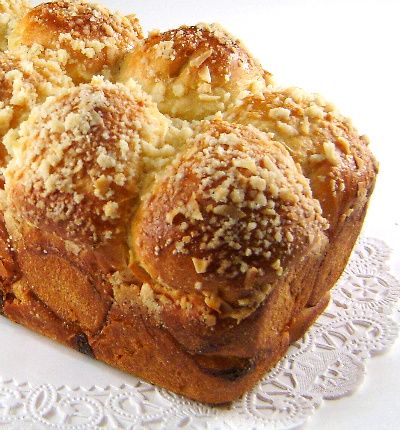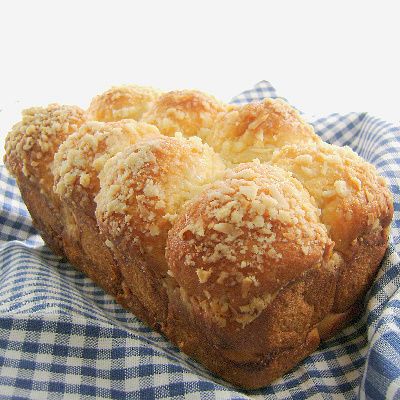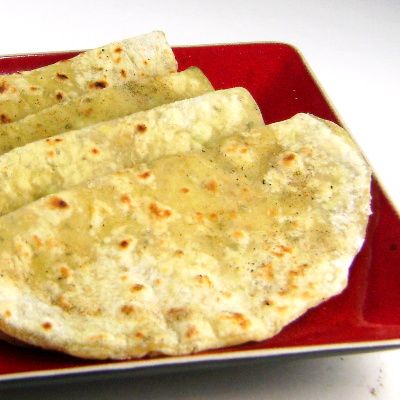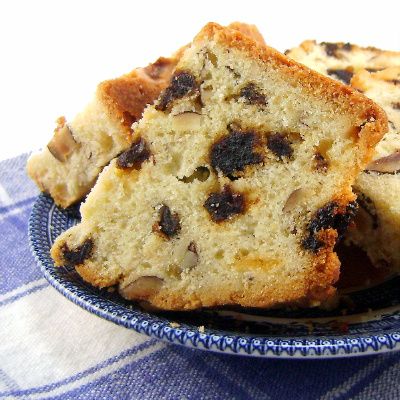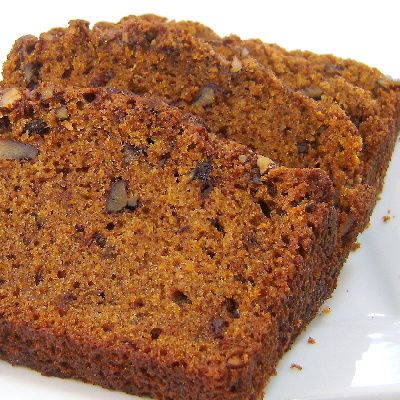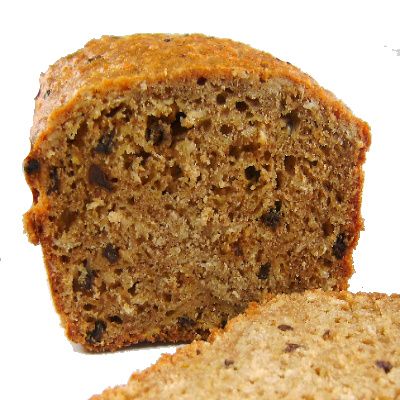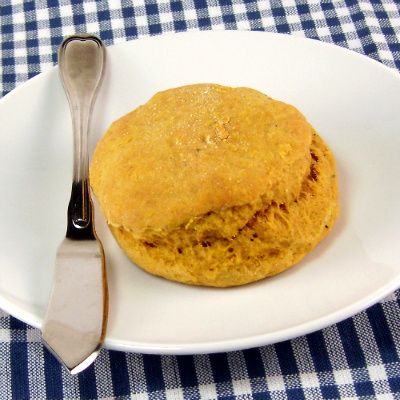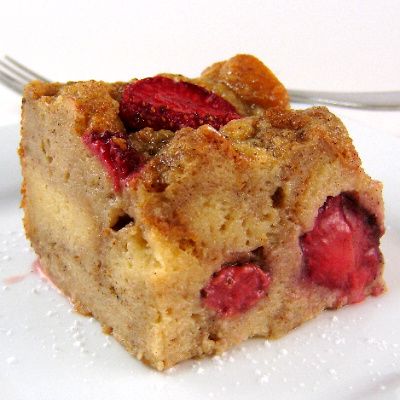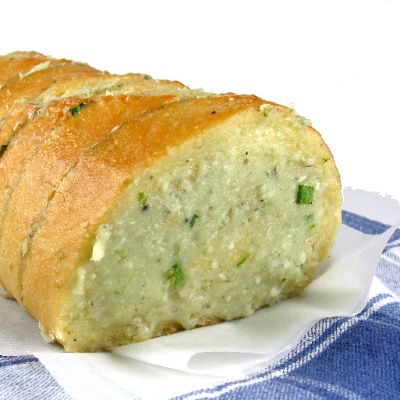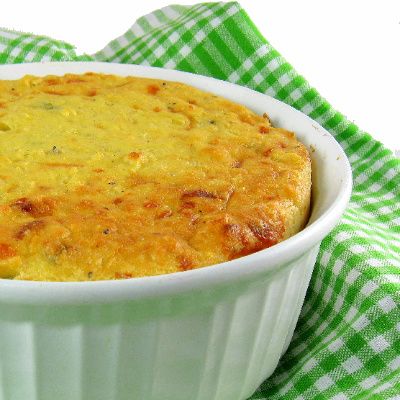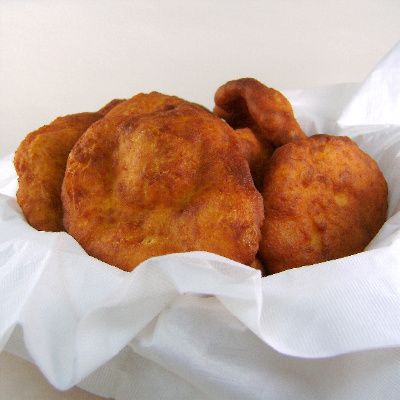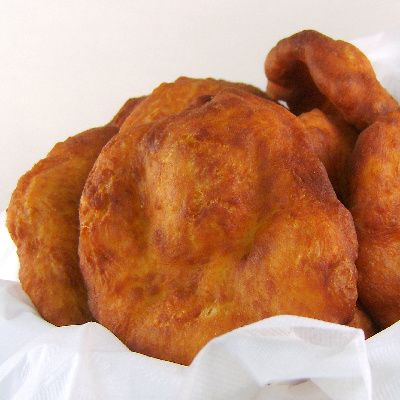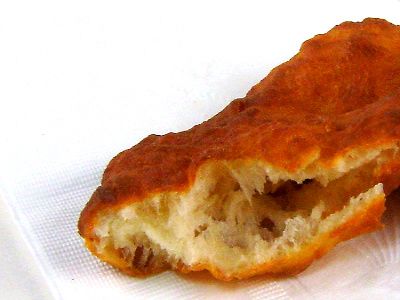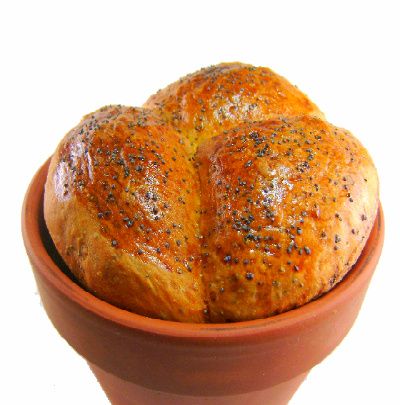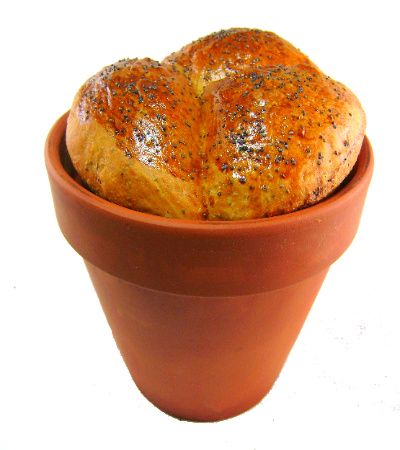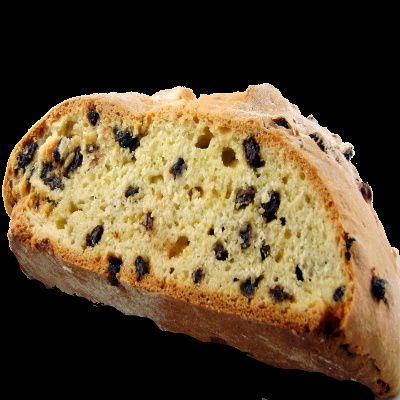 Top
Top BottomFrom the kitchen of One Perfect Bite..."Snails" or schnecken were a delight of my childhood. Our German and Swedish neighbors, Hannie and Mrs. P, both made them on regular basis. One made them in crescent form, the other shaped them as snails. While they look like sticky buns to the untrained eye, they are really more like a rugelach or crisp Danish. Yes, they're a bother to make, but I promise you'll find them to be worth every second you'll spend on them. I've just finished making a squirrel's stash of them for breakfasts while my family is here. I have two recipes for schnecken and both of them are delicious. Over time, I've settled on a dough that can be used for both types. It simplifies things a bit. I am going to provide two types of filling and two types of topping and let you select which you would prefer to use. One filling is made with almond paste, the other with cinnamon and sugar. I use a streusel topping for the almond filled buns and a nut topping for the others. Lest any of you think Bob and I always walk in lockstep, I love the almond-streusel buns while he prefers the more traditional cinnamon and nut topping. These rolls are not meant for folks new to yeast doughs, even old hands will need a goodly measure of patience to handle the wait times involved in this recipe. I shape my schnecken in snail form because I find that shape the easiest to work with. If you try these, I know you'll love them. It's like visiting a Viennese pastry shop in the comfort of your own kitchen. Here's the recipe.
BottomFrom the kitchen of One Perfect Bite..."Snails" or schnecken were a delight of my childhood. Our German and Swedish neighbors, Hannie and Mrs. P, both made them on regular basis. One made them in crescent form, the other shaped them as snails. While they look like sticky buns to the untrained eye, they are really more like a rugelach or crisp Danish. Yes, they're a bother to make, but I promise you'll find them to be worth every second you'll spend on them. I've just finished making a squirrel's stash of them for breakfasts while my family is here. I have two recipes for schnecken and both of them are delicious. Over time, I've settled on a dough that can be used for both types. It simplifies things a bit. I am going to provide two types of filling and two types of topping and let you select which you would prefer to use. One filling is made with almond paste, the other with cinnamon and sugar. I use a streusel topping for the almond filled buns and a nut topping for the others. Lest any of you think Bob and I always walk in lockstep, I love the almond-streusel buns while he prefers the more traditional cinnamon and nut topping. These rolls are not meant for folks new to yeast doughs, even old hands will need a goodly measure of patience to handle the wait times involved in this recipe. I shape my schnecken in snail form because I find that shape the easiest to work with. If you try these, I know you'll love them. It's like visiting a Viennese pastry shop in the comfort of your own kitchen. Here's the recipe.
Schnecken...from the kitchen of One Perfect Bite inspired by a recipe in the New York TimesIngredients:Dough1/2 cup whole milk
1-1/2 teaspoons instant yeast
2 large eggs, room temperature
1/3 cup sugar
2-3/4 cups unbleached all-purpose flour
12 tablespoons unsalted butter, room temperature
3/4 teaspoon salt
Almond Filling2 ounces almond paste
3 tablespoons unsalted butter, room temperature
1/4 cup powdered sugar
1 teaspoon cornstarch
1/8 teaspoon salt
1/8 teaspoon almond extract
1/2 teaspoon vanilla extract
1 large egg yolk
Cinnamon Sugar Filling1/2 cup firmly packed light brown sugar
1 tablespoon ground cinnamon
4 tablespoons unsalted butter
Streusel Topping1/2 cup unbleached all-purpose flour
2 tablespoons packed light brown sugar
2 tablespoons granulated sugar
1/4 teaspoon ground cinnamon
Pinch salt
4 tablespoons unsalted butter, melted and lukewarm
Glaze for Streusel Topping1 cup powdered sugar, sifted
Pecan ToppingTopping:
3/4 cup firmly packed light brown sugar
4 tablespoons unsalted butter
3 tablespoons honey
1 tablespoon light corn syrup
1-1/2 cups (6 ounces) coarsely chopped pecans
Directions:1) To make the dough: Heat milk in a small saucepan until bubbles form around edges. Remove from heat and cool to lukewarm. Pour milk into a large mixing bowl, sprinkle yeast over milk, stir and let stand 5 minutes. Crack eggs into mixing bowl and whisk to combine. Stir in sugar and flour with a wooden spoon. Knead ingredients together in bowl until scrappy dough forms. Turn dough onto counter and knead briefly. Turn mixing bowl over dough and rest 20 minutes.
2) While dough rests, place 12 tablespoons butter and salt in a mixer bowl with a paddle attachment and beat until fluffy, pausing once to scrape down bowl, 30 seconds. Set aside.
3) Knead dough until smooth, 5 minutes. Pull into sections and add to mixer bowl with butter. Mix on medium speed until butter is mostly incorporated, scraping down bowl as necessary, about 3 minutes. Transfer dough with a plastic scraper or a spatula to counter. Work by hand, using short, pulling motions, until dough is smooth but still very soft, about 20 minutes. Shape dough into a round and place in a clean mixing bowl and tightly cover with plastic wrap. Rise at cool room temperature until spongy, 4 to 5 hours.
4) Sprinkle counter lightly with flour. Press fist into center of dough and deflate gently. Gather dough up and place on floured counter. Sprinkle top of dough lightly with flour and press into rectangle 10 inches wide by 14 inches long. Fold top third of dough down to center and bottom third up to cover it. Pinch edges to seal. Rotate dough on countertop one-quarter turn to the right so that it resembles a closed book. Press and stretch dough into rectangle 6 inches wide by 10 inches long. Repeat stretching and folding until dough resembles closed book 4 inches wide by 6 inches long. Press edges to seal. Sprinkle lightly on both sides with flour, wrap tightly in plastic wrap and
refrigerate overnight.
5) To make almond filling: Combine almond paste, butter, powdered sugar, cornstarch, salt and extracts in a food processor bowl and process until smooth, pausing once to scrape down bowl, about 1 minute. Add egg yolk and process until smooth. Transfer filling to a small bowl, cover well and refrigerate until 30 minutes before using.
6) To make cinnamon and sugar filling: Combine brown sugar and cinnamon in a small bowl. Melt butter but do not mix with sugar.
7) To make streusel topping: Combine ingredients in a small bowl and fluff with fork until combined. Squeeze streusel between fingers to create pieces of varying size. Cover with plastic wrap and refrigerate until ready to use.
8) To make pecan topping: In a 1-quart saucepan, combine brown sugar, butter, honey and corn syrup over low heat; stir until sugar and butter are melted. Set aside.
9) To shape dough: Remove almond filling and dough from refrigerator. Sprinkle counter and top of dough lightly with flour, and whack dough with a rolling pin to flatten it. Roll dough evenly into a 20-inch square. Continue to loosen from counter and roll until dough relaxes, using as little flour as possible.
10) To fill with almond filling: Spread almond filling evenly over dough. Trim edges with a bench scraper or a chef's knife. Roll dough tightly and evenly from bottom, jellyroll-style. You should have a cylinder 18 inches long and about 4 inches in diameter. Transfer jellyroll to a sheet pan lined with parchment paper and refrigerate 20 minutes.
11) To fill with cinnamon-sugar: Brush dough with melted butter and sprinkle with cinnamon- sugar mixture. Roll dough tightly and evenly from bottom, jellyroll-style. You should have a cylinder 18 inches long and about 4 inches in diameter. Transfer jellyroll to a sheet pan lined with parchment paper and refrigerate 20 minutes.
12) To apply streusel topping: Remove jellyroll from refrigerator and slice into 20 1/2-inch rounds with an electric knife or a sharp serrated knife. Transfer 10 rounds each to 2 11 -1/2 x 17-inch parchment-lined sheet pans. Spray surface lightly with water. Sprinkle generously with streusel, pressing streusel into surface. Cover schnecken lightly with plastic wrap and let rise until light and spongy, about 90 minutes.
13) To apply pecan topping: Pour pecan topping into a greased 11-1/2 x 17-inch pan and sprinkle with pecans. Remove jellyroll from refrigerator and slice into 20 1/2-inch rounds with an electric knife or a sharp serrated knife. Transfer to pan. Cover lightly with plastic wrap and let rise until light and spongy, about 90 minutes.
14) Adjust oven rack to lowest position and heat oven to 400 degrees F. Place a shallow pan on bottom of oven and pour boiling water into pan. Bake schnecken one sheet pan at a time. After 5 minutes, lower oven to 350 and bake until nicely risen and deep golden brown, 15 to 20 minutes more. Pecan rolls may need more baking time.
15) If you are using streusel topping, whisk powdered sugar and 2 tablespoons hot water in a small bowl to make glaze while rolls are baking. Remove sheet pan from oven and brush schnecken lightly with glaze. Transfer schnecken to a cooling rack. Bake second sheet pan as you did the first.
16) If you are using the pecan topping, remove sheet pan from oven and immediately invert onto a serving plate.
17) Regardless of topping, this recipe makes 20 4-inch schnecken.
Cook's Note: Pecan schnecken can be also be baked in large-size muffin pans.
You might also enjoy these recipes:
Lemon Cheese Buns - One Perfect BiteSt. Lucia Buns - One Pefect BiteCinnamon Rolls - One Perfect BiteBlueberry Cream Cheese Rolls - Inspired2CookPumpkin Five Spice Sweet Rolls -Coconut and LimePan de Mallorca Mallorcan Sweet Rolls - Always Order Dessert


